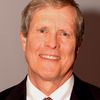
Millions of Baby Boomers and older workers anticipate pursuing work beyond their mid-60's, the traditional time for retirement. For some, deficient retirement assets point to a history of hard luck and inadequate saving. For others more fortunate to have saved, the Great Recession has decimated retirement accounts, forcing delayed retirement.
Now MetLife’s Mature Market Institute (MMI), a research division of the global insurance and financial services company, has published an eye-opening study entitled, Buddy, Can You Spare a Job? Published in conjunction with David DeLong & Associates, this study confirms that working beyond traditional retirement age is one consequence of looming economic peril. According to the report, of those between 55 and 70 who need to keep working, about six in ten have less than $250,000 in retirement assets. The MMI study elaborates further:
Thanks in part to the recent recession, many older Boomers do not have the retirement savings needed to support them into their mid-eighties. And about three-quarters of today’s workers report they expect to work for pay after they retire.
Among those who expect to stop working for pay later than expected, two-thirds (67%) say they need to do so to recover/rebuild financial resources for retirement and slightly more than four in 10 (44%) expect to stop working three to five years later than originally planned.
Given extraordinary economic pressure to continue working beyond traditional retirement age, older workers nevertheless confront entrenched obstacles to staying employed and finding jobs:
The survey also finds that, among those who are currently seeking work or are retired and unable to find work, 43% state that the primary reason they have not been able to find work was because they could not find an employer who would hire someone their age.
As I’ve written in books and articles for years, age discrimination is one of the most difficult social and economic penalties to prove culpability, but assuredly it lurks. It’s incredibly easy for employers to cite myriad reasons, other than age, why an older job applicant did not become employed. Yet, among those over age 50 looking for work, many believe instinctively that their age is a factor in why they don't get job interviews and offers. Statistics support these concerns: in fiscal year 2008, EEOC recorded 24,582 charges of age discrimination, up from 19,103 in 2007.
If Boomers and older workers hope to achieve sustainable age inclusiveness in a profound and immediate way, they clearly must confront age discrimination in a manner reminiscent of their past activism. A precursor social movement that comes to mind is the rise of feminism in the 1960s.
Modern feminism took off because of unmet internal needs among women, particularly homemakers in the 1950's and early 1960's. Betty Friedan, author of The Feminine Mystique, poignantly articulated this “problem with no name”:
The problem lay buried, unspoken, for many years in the minds of American women. It was a strange stirring, a sense of dissatisfaction, a yearning [that is, a longing] that women suffered in the middle of the 20th century in the United States. Each suburban wife struggled with it alone. As she made the beds, shopped for groceries … she was afraid to ask even of herself the silent question -- "Is this all?"
A leading personality in the “second wave” of the U.S. Women’s Movement and cofounder of the National Organization for Women (NOW), Friedan noticed a widening fulfillment gap between her roles as mother and homemaker and her aspiration to put her college education to work as a journalist and author. A 1957 survey of her classmates at Smith College, at the time of their 15th college reunion, further reinforced the presence of a churning undercurrent of dissatisfaction with gender inequality. It turned out that millions of women wanted a more equitable playing field.
Then workforce needs arose. The nation began to emerge from a manufacturing and blue-collar economy, one that traditionally favored male workers. A robust post-war economy also allowed more high school graduates to attend college. As millions of Boomer women pursued college degrees in the 1960s and 1970s, the nation created millions of new jobs in white-collar sectors, including professional services, management and information technology.
Pervasive psychological needs for social change plus fundamental structural changes in the nature and availability of American jobs combined to propel a consciousness movement toward gender equality in the workplace. The movement caught fire as Freidan’s thought leadership quickly became mainstream value consensus.
The nation is now confronting convergence of forces similar to those that helped spawn the women’s movement of the 1960s and 1970s. The first force is inner, unmet needs.
By not finding suitable and sustainable employment, millions of male and female Boomers and older workers are experiencing feelings of inadequacy, anger, resentment and depression. These are brutal emotional penalties for the crime of aging.
Yet disenfranchisement of older workers comes at a time when the nation is also confronting shortages of qualified workers. The Bureau of Labor Statistics projects a shortfall of 8 million workers in the United States in 2010. This dramatic human resources deficit coexists with mounting concerns that a mass Boomer exodus from the workforce could leave many industries at competitive disadvantages globally, especially science, healthcare and engineering sectors.
Thus, systemic age discrimination and challenging workforce demands could coalesce to stimulate a consciousness movement around age inclusiveness. But any grassroots and organized resistance against age discrimination still lacks a third essential ingredient: poignant thought leadership articulating the problems while rallying focused activism.
This critical third force for change has yet to be realized because a lucid and persuasive communicator and organizer has not yet surfaced -- someone who, in the spirit of Betty Friedan, articulates the injustices of age discrimination and then organizes dispirited sufferers into an irrepressible political juggernaut. Even Friedan confronted the injustices of ageism in her book The Fountain of Age without successfully inspiring another movement, a National Organization for Aging. Her 1993 book simply may have been too early.
Now read Betty Friedan’s excerpt from The Feminine Mystique again, this time edited from the perspective of age discrimination:
The problem lay buried, unspoken, for many years in the minds of underemployed and unemployed older workers. It was a strange stirring, a sense of dissatisfaction, a yearning [that is, a longing] that they suffered at the beginning of the 21st century in the United States. Each aging unemployed worker struggled with it alone. As they made the beds, shopped for groceries … they were afraid to ask even of themselves the silent question -- "Is this all?"
Never before have so many over age 50 needed equitable opportunities to gain and keep productive jobs. Never before has the nation confronted such a potentially large shortfall of qualified workers in strategic industries. Never before has there been a greater need for a thought leader who can inspire a generation to organize against age discrimination, eradicating this stubborn obstacle to full inclusiveness in American society.
If these three forces ever do converge, our collective consciousness will rise again, and the nation will be stronger, fairer and more congruent with its founding ideals.
